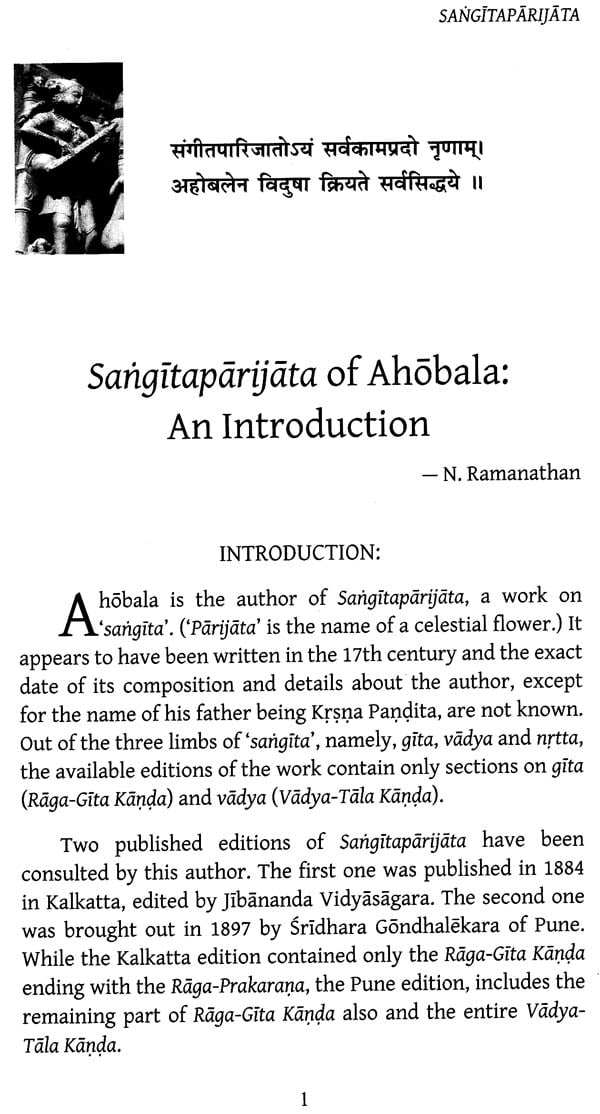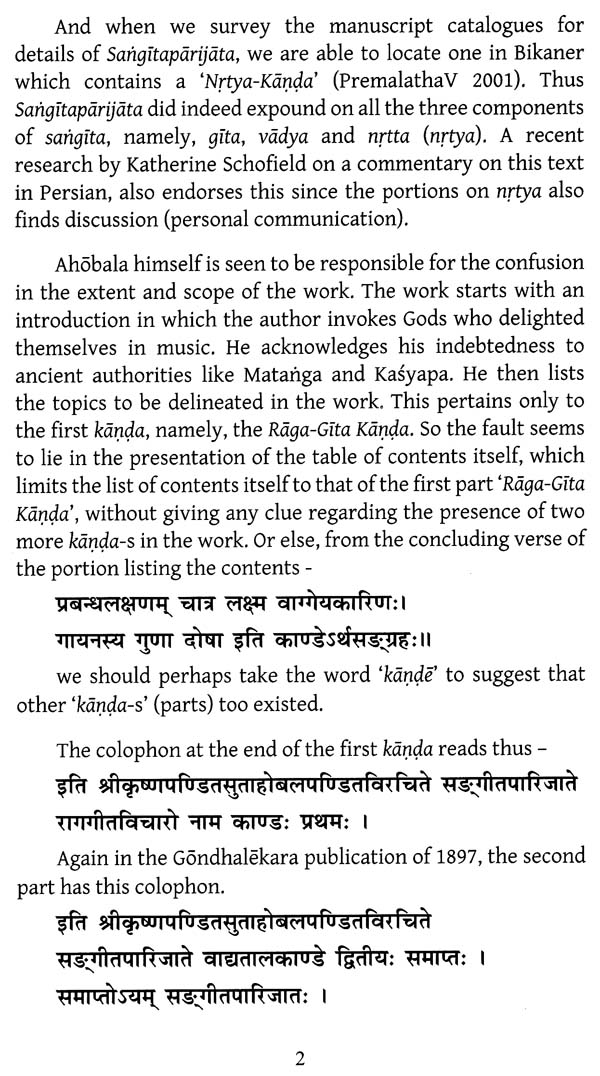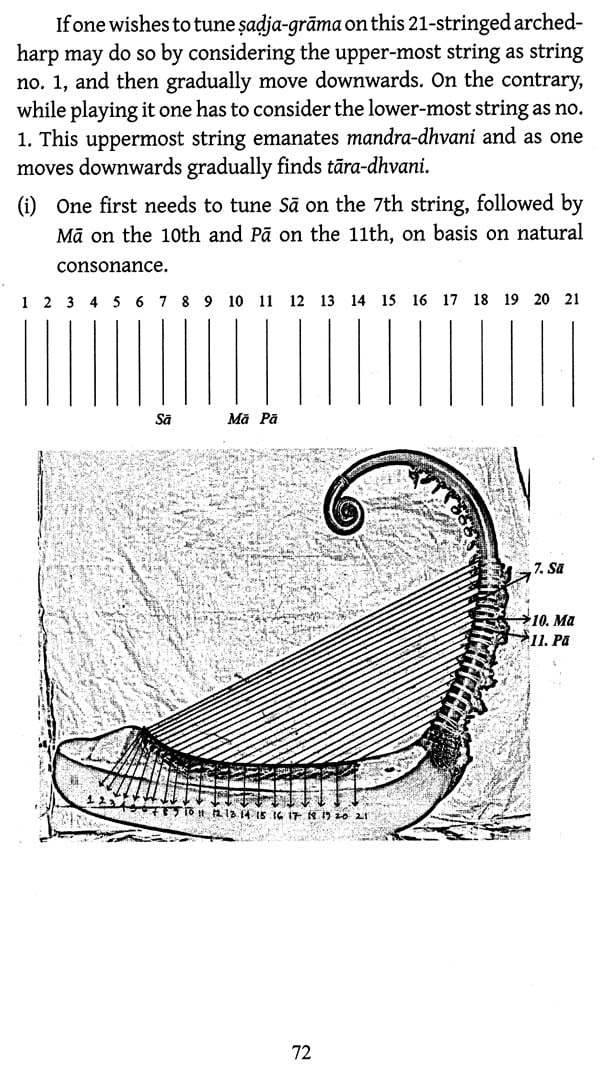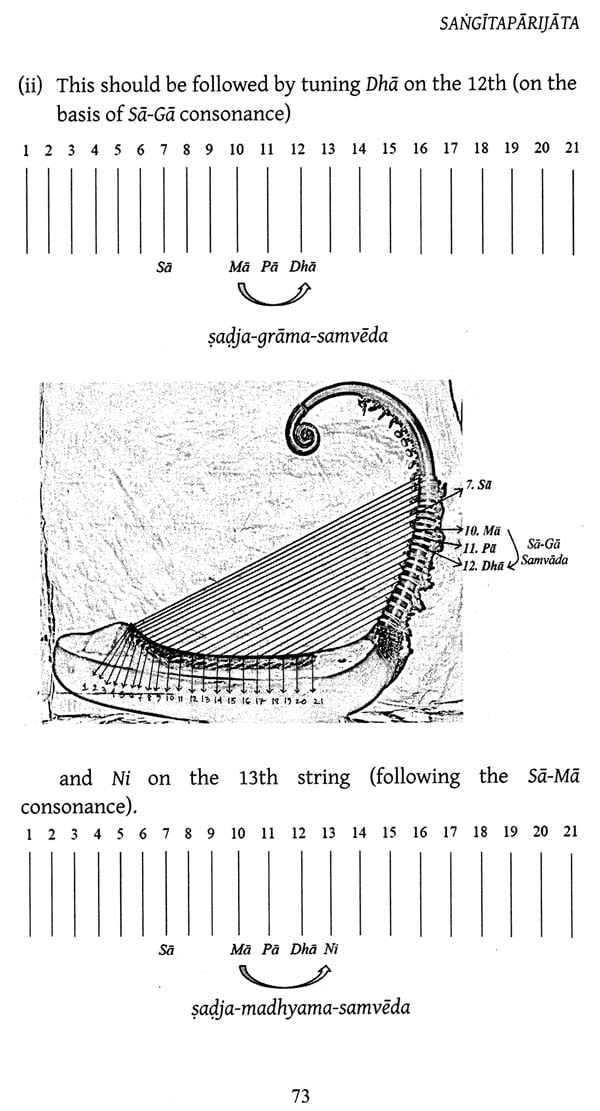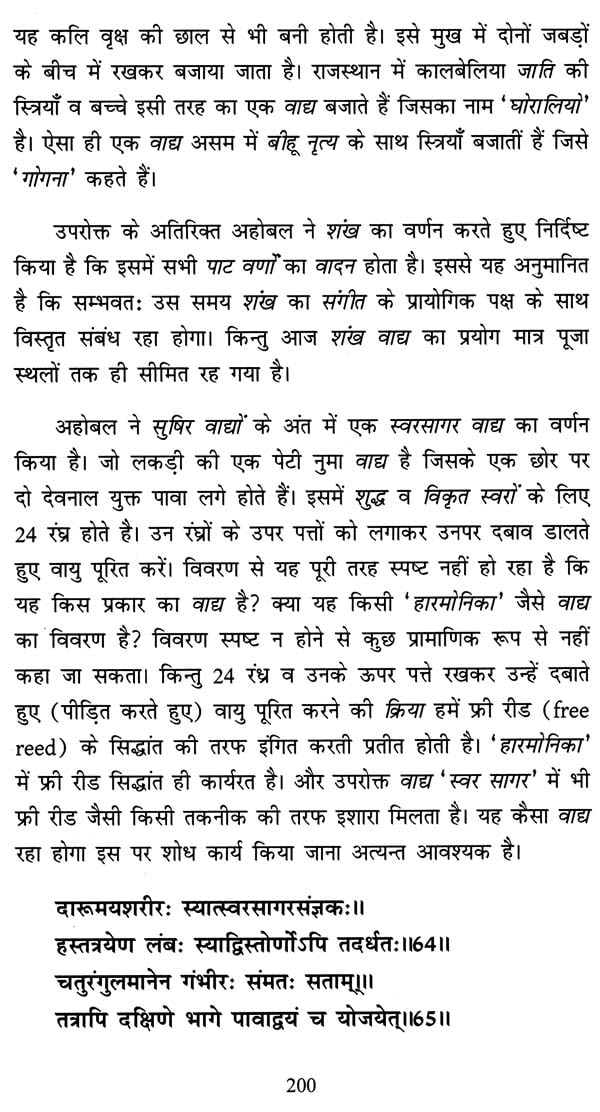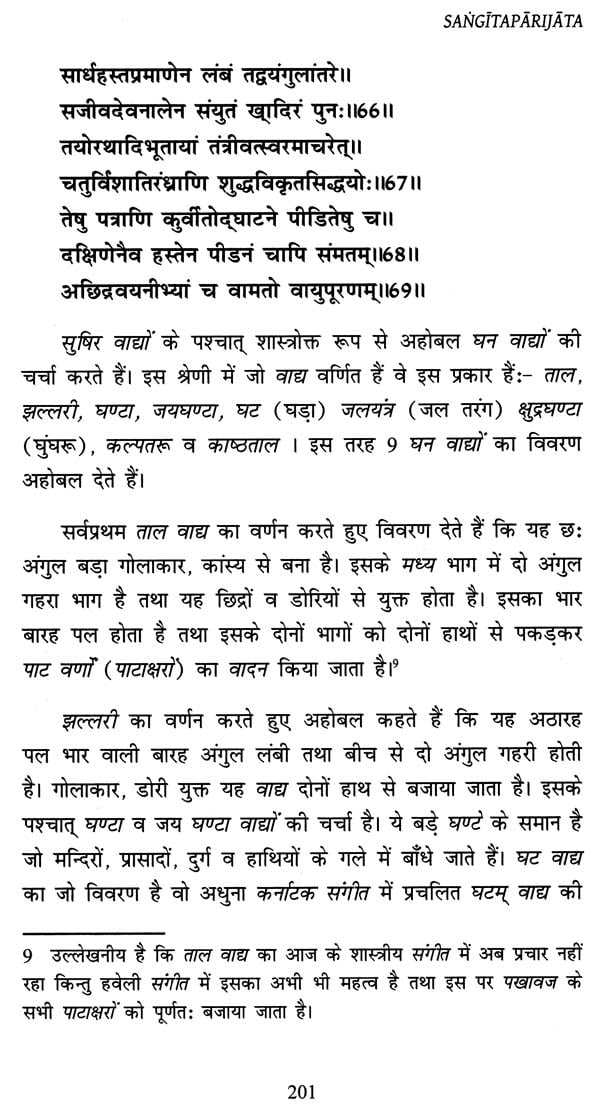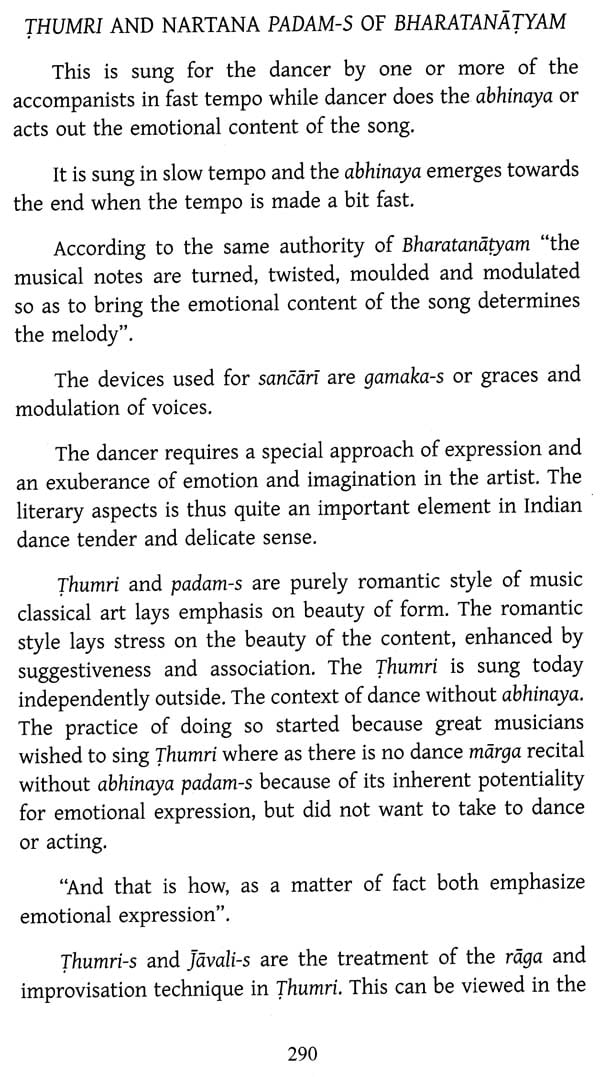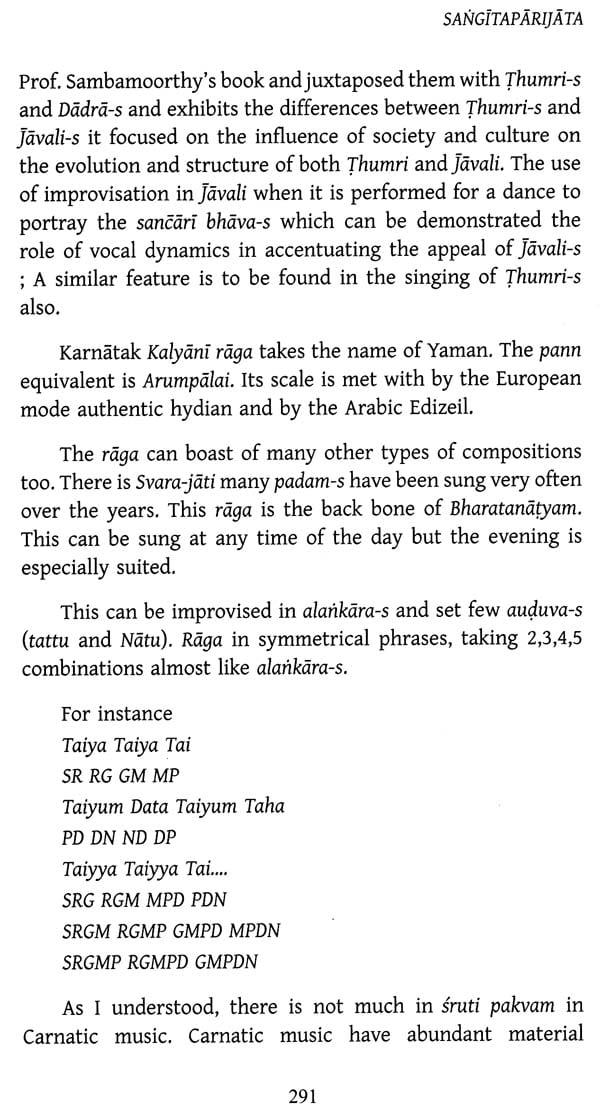
Ahobala's Sangitaparijata (Bhavan's Series on Natya Nritya and Sangita)
Book Specification
| Item Code: | NAV725 |
| Author: | Deepti Omchery Bhalla |
| Publisher: | Bharatiya Vidya Bhavan |
| Language: | English and Hindi |
| Edition: | 2019 |
| ISBN: | 9788193867969 |
| Pages: | 304 |
| Cover: | PAPERBACK |
| Other Details | 9.00 X 6.00 inch |
| Weight | 440 gm |
Book Description
Parijata, is the celestial tree, that fulfilled the wishes of all living beings, which was stolen by Krsna from Indra to please his consort Satyabhama. Ahdbala compares the sacred sound of music with the divine Parijata flowers and chose to name his text Sanigitaparijata as he felt music fulfilled all the desires of the Heart.
Dr. Deepti Omchery Bhalla, is a Senior Professor of Karnatak Music, Dean & Head of the Department of Music, at the Faculty of Music and Fine Arts, University of Delhi, where she has been teaching since 1985. A Gold medalist from University of Delhi, she is an ‘A’ grade artiste of A.IL.R and ‘TOP’ grade artiste of Doordarshan and empanelled in the ‘Outstanding’ category by the I.C.C.R Deepti has done intense research in Sopana Sangeetam of Kerala along with her mother Padmashri, Dr. Leela Omchery and presented many research findings through Mohiniyattam. Participated in several National and International festivals, Seminars and conducted several workshops and lec dems both in India and abroad. Deepti has several DVD’s and CD’S brought out by INVIS MULTIMEDIA and PRASAAR BHARATI, with rare collection of compositions rendered in both vocal and Mohiniyattam.
The Sangeet Natak Akademi has recorded a special documentary of her research Choreographies. Deepti has also been honored with several prestigious awards like the Kerala Sangeet Natak Akademi award, The Central Sangeet Natak Akademi award. She also the recipient of the Krishna Gana Sabha award and recently in 2015 she received the title of ‘Sangita Nrtta Visharada’ from the Iryammin Thampi Research foundation (established by the family of the Royal composer), Cochin & the title 'Nrtyasikhamani' from Delhi Karnataka Sangeeta Sabha in 2017.
Deepti has been the editor of 4 volumes of Swar Bharati journals on Brhaddési, Sangitaratnakara, Sangitadarpana and Sangitaparijata. She has also been the scholar co-ordinator for two major internatinal seminars 'Sangitaratndkara-Textual & Oral Traditions and Kaisiki Vritti - under the ageis of Bharatiya Vidya Bhavan, Delhi & Sangeet Natak Akademi, New Delhi respectively.
Bharatiya Vidya Bhawan, Delhi Kendra, in its earnest effort to promote Sanskrit and Sanskriti has taken up the challenging task of bringing forth several Sanskrit texts on music, dance and drama through Bhavan’s Series on ‘Natya Nritya and Sarigita’. The Series has received wide acclaim with articles written by eminent scholars and researchers who have deeply studied various important concepts given in these texts and analysed them establishing their importance even in the present times.
The Series has so far covered ‘Abhinavagupt’, a collection of articles, a tribute to the polymath Abhinavgupt and Bharat Muni’s ‘Natyasastra’, Matariga Muni’s ‘Brhaddésr, Sarngadéva’s ‘Sarigitaratndkara’, Catura Damodara’s ‘Sanigitadarpanam’, Pandit Ah6bala’s ‘Sanigitaparijata’ and ‘Prominent Musical Instruments -Technique and Tradition’.
‘Sangitaparijata’ of Ahdbala a Sanskrit text on music, written in the 17th century, though not a monumental work like ‘Sargitaratndkara’ of Sarngadéva, is valuable as it was written by a scholar who was well acquainted with the music traditions of both south and the north. Even though written by a southern scholar the text is of immense value to both Karnatak as well as Hindustani music and is one of the most popular Sanskrit works.
We hope this book will be appreciated by those who have a deep interest in the performing arts and benefit the young researchers in their study of the Sangitasastra-s.
There several Sanskrit texts written during different periods of times by scholars known and unknown, which provide vital information about the system of music and arts that existed in their region of origin. Each text no matter how minor and insignificant contributed in some way or the other in understanding various musical concepts and their stages of the development.
Sangitaparijata of Ahdbala a Sanskrit text on music, written in the 17% cent, though not a monumental work like Sangitaratnakara of Sarngadéva, is valuable as it was written by a scholar who was well acquainted with the music traditions of both south and the north. The text does not mention any specific categorisation of music into the Hindustani and Karnatak but introduces many aspects of southern music in the north, making it an important text of Hindustani music. Pt Bhatkhande describes the text as one of the most popular Sanskrit works of the north.
Parijata, is the celestial tree, that fulfilled the wishes of all living beings, which was stolen by Krsna from Indra to please his consort Satyabhama. Ahdbala compares the sacred sound of music with the divine Parijata flowers and chose to name his text Sangitaparijata as he felt music fulfilled all the desires of the heart. Scholars on the basis of this name predicted his origin from the southern region of India. Ahobala who called himself a Dravida Brahmana was the son of Sri Krsna, also a Sanskrit scholar, from whom he trained in music.
The author seems to have been influenced by many of his predecessors like Sarngadéva, SOmanatha, Locana Kavi, Pandarika Vitthala and was well versed with both southern and northern music traditions.
Of the three limbs of sangitam, gitam and vadyam find a place in the study of Ahdbala. The ‘nrtyam ’ on the other hand does not seem to have been explained anywhere in the text, which ends with the chapter on ‘Raga Prakarana’. Ahdbala however accepts the triad concept of the term sangitam. There has been some speculations regarding the text including a chapter on dance ‘Nrtya Kanda’ but this has been refuted by Dr. Urmila Sharma, an eminent scholar from Varanasi and sister of late Dr. Premalata Sharma. There are two main chapters or kandas- Raga-Gita-Vicara Kanda which includes nada, Sruti, svara, grama, murcchanda, varna, alankara, gamaka, méla & prabandha. The second chapter deals with vadya & tala.
Gandharvam according to Ahdbala was the harmonious blend of svara, tala and pada. In his treatment of alankara-s, he emphasises upon the aesthetics of svara combinations so as to enhance the musical appeal of the melodies. The suddha- svara saptak established by Ahdbala is equivalent to Kafi of Hindustani music and Kharaharapriya of Karnatak Music.
While raga classification in the north was proceeding on the lines of méla and thdta, the south based it on the mélajanya raga, parent and their derivative melodies. Ahdbala also gave a méla-raga classification though the names of méla-s have not been assigned to all raga-s described by him. He is credited for the accurate fixation of guddha and vikrta svara-s to the tension in the strings in Vina. The svara passages given for each raga are of immense value in the study of raga-laksana-s of raga-s mentioned in the text. Though an important text, Sarigitaparijata is a bit vague in categorising all items into only two main chapters or kanda-s, Raga-Gita- Vicara Kanda and Vadya-Tala Kanda.
The Bharatiya Vidya Bhawan, Delhi Kendra’s annual publication Swara Bharati, 2018 on Sarigitaparijata includes 14 articles by researchers and eminent scholars from both north and south. Not much has been found written about this text and with the few available resources the scholars have taken the challenging task of a deep study of its contents and written articles based on their own analysis of the same.
